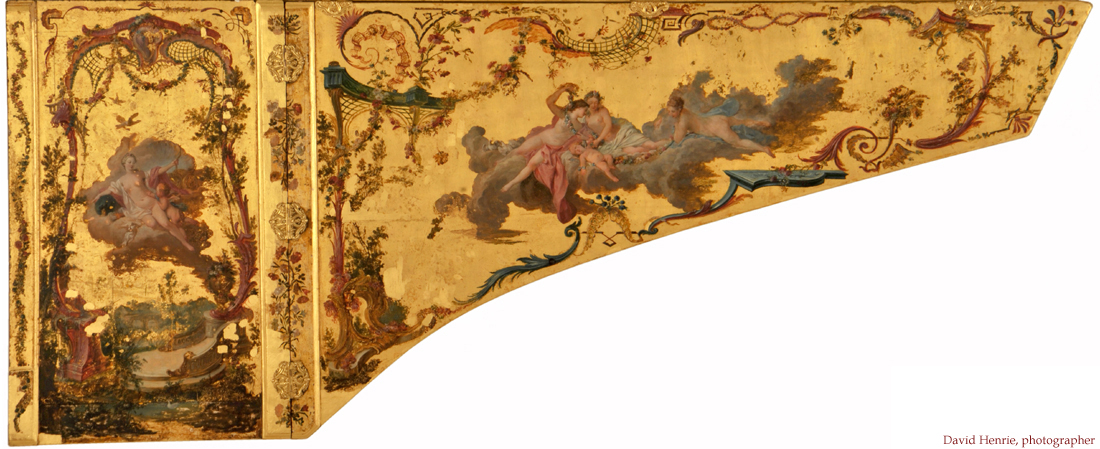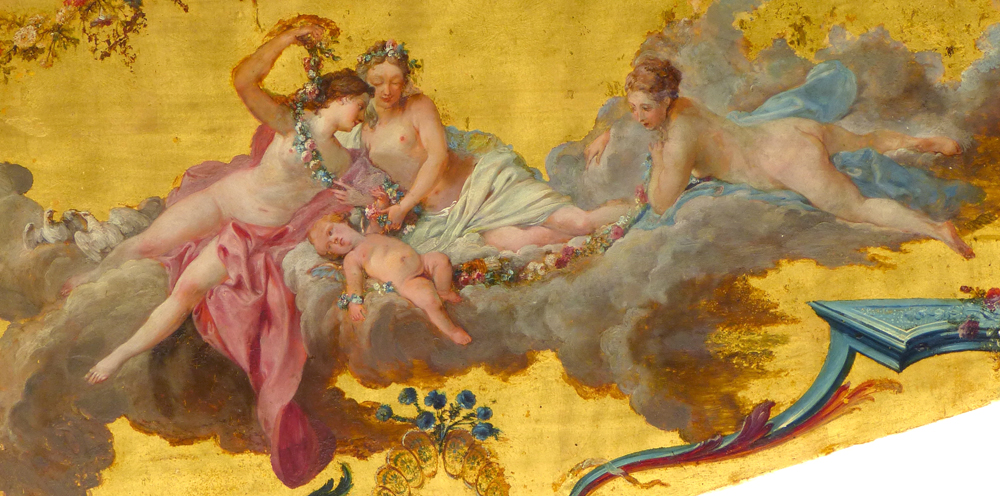![]()
A Franco-Flemish double-manual harpsichord,
![]()
The painting of
the outside of the lid of
the Franco-Flemish harpsichord

The outside of the lid has been decorated by two different artists, one painting the figures and the other painting the decorations around these. The figure paintings on the outside of the lid have been attributed to François Boucher, Paris, 1750. These show Venus and her attributes on the top of the lid flap on the left, and Flora and Juno with a reclining nude on the main lid on the right.
The roccoco decorations surrounding the figures have been attributed to Christophe Huet, Paris, 1750.
![]()

Venus and Cupid with their attributes. Venus herself represents the embodiment of love and sexuality. The Cupid is the God of desire, often portrayed as here as the son of Venus. The bow and quiver full of arrows represent Venus and Cupid's power in the victory of love. The scallop shell chariot rolls on golden wheel and Venus rests on a soft pillow with a tassel. Two loving doves, also representing pure love, coo sweetly below her.
![]()

A detail of the painting on
the outside of
the main lid showing Flora, Juno, a putto and a reclining nude
These paintings, of an exceptionally high quality, have been attributed to François Boucher, Paris, 1750.
For more details of the lid paintings at a nearly stage of cleaning and restoration click here.
![]()
Go back to the main page of this section
![]()
Important
Features of this harpsichord
![]()
A brief history of the musical and decorative states of the Franco-Flemish harpsichord
![]()
Details of
the original state of the instrument
![]()
Details of the eighteenth-century states of this harpsichord
Details of the modern history of this harpsichord
![]()
A problem encountered in the ethical restoration of this harpsichord
![]()
Return to the main page of this section
![]()
![]()